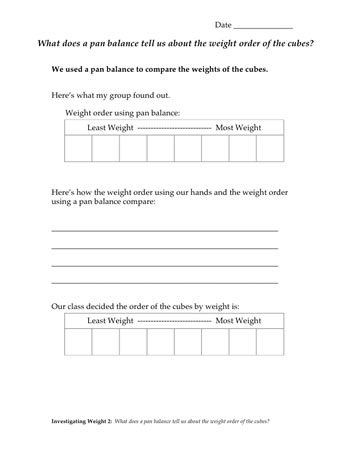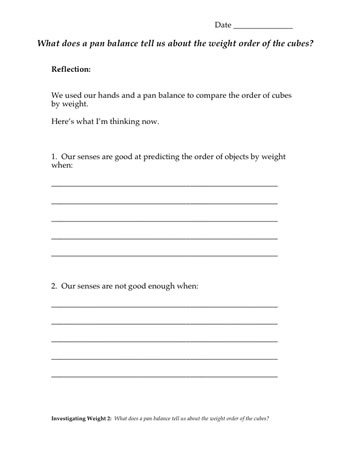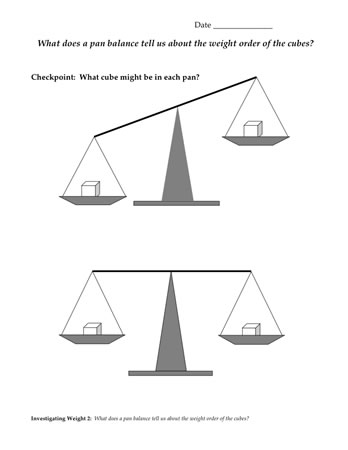What does a pan balance tell us about the weight order of the cubes?
Plan Investigating Weight 2
“Maybe this order.” … “Maybe that order.” … “This is easy.” … “No, this is hard!”
Students likely encountered difficulty and disagreement,in their quest to order the cubes by felt weight. In this investigation they get help from a scientific instrument: a pan balance.
After learning how to use the balance, students compare the weights of the cubes and arrive at an objective ordering. They then compare this new ordering to the one they got before. By the end of this investigation, students will better understand the limitations of felt weight and appreciate the value of instruments for careful measuring.
Learning Goals
- to learn how to use a pan balance to compare the weights of objects
- to recognize the limitations of felt weight
- to appreciate the value of an instrument for comparing weights
| Sequence of experiences | ||
|---|---|---|
| 1. Ask the question | All Class | 15 Mins |
| 2. Check the weight order** | Small Groups | 15 Mins |
| 3. Analyze the data | All Class | 5 Mins |
| 4. Make meaning | Discussion | 10 Mins |
| 5. Reflect | Individual | 5 Mins |
** If this is the students’ first experience with a pan balance, they may need some extra time.
Materials and Preparation
For the class:- Post the investigation question in a place where all students can see it.
- Post the investigation question from the previous investigation: How good are our senses at comparing the weights of the cubes?
- The class table from the last investigation with the “felt–weight” orderings of the cubes
- A blank table to record the pan balance ordering of cubes; an example appears in Step 2
- 1 set of cubes with the names of the materials on the cubes
- 2 pan balances adjusted for accuracy









